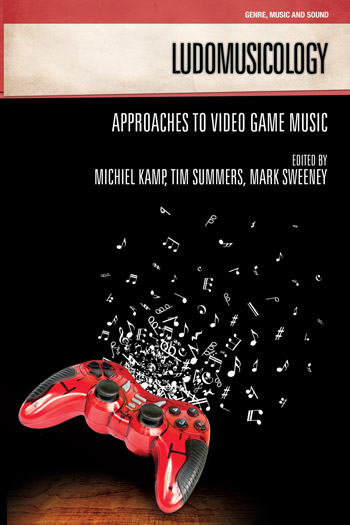Game and Play in Music Video Games
Ludomusicology - Approaches to Video Game Music - Michiel Kamp
Anahid Kassabian [+]
University of Liverpool
Freya Jarman [+]
Liverpool University
Description
This chapter considers the ways that music as a central activity is represented in video games and smartphone apps. It specifically considers artifacts that might be labeled ‘music games’, or ‘music apps’. Consideration of the term ‘music games’ offers up a knot of multiple conceptual strands, and the chapter first uses existing scholarship to explore the components that make up the notions of ‘play’ and ‘game’. There are two main types of music programmes: games in which the player is right or wrong, such as Taiko: Drum Master (Namco, 2004), or apps and other kinds of programmes, in which the player engages in ‘sandbox’ play, such as in the iPhone app Bloom (Eno and Chilvers/Opal, 2008). We show that music is represented in virtual worlds as either disciplinary or liberatory, and sometimes both. We conclude that games are virtual worlds in which a telos is established in the form of a prelusory goal; one strives to achieve something and is measured accordingly. The apps, however, do not so much create virtual worlds as they offer the tools to explore the audiovisual possibilities of the digital realm, in which one can make sounds and shapes and colours and patterns and rhythms ad infinitum for very low cost and with very little expertise whatsoever. This world of unstructured (or perhaps semi-structured) play precludes any significant prelusory goal beyond perhaps ‘enjoyment’ or ‘make pleasant sounds’. We see a distinct split in the representation of music in these two kinds of virtual worlds. The games present music as a task to be achieved, a disciplinary activity in which the player should ‘play’ again and again until the game (and thereby music) is mastered, while the apps allow for dipping in and out, for the most casual of engagements as well as more intensive devotion, and for experimentation and creativity. While it is clear to any practicing musician that the two styles of musical activity are inextricably intertwined, and cannot be pulled apart, music in virtual worlds seems only to be able to appear—or perhaps sound?—as one or the other, but not both.






